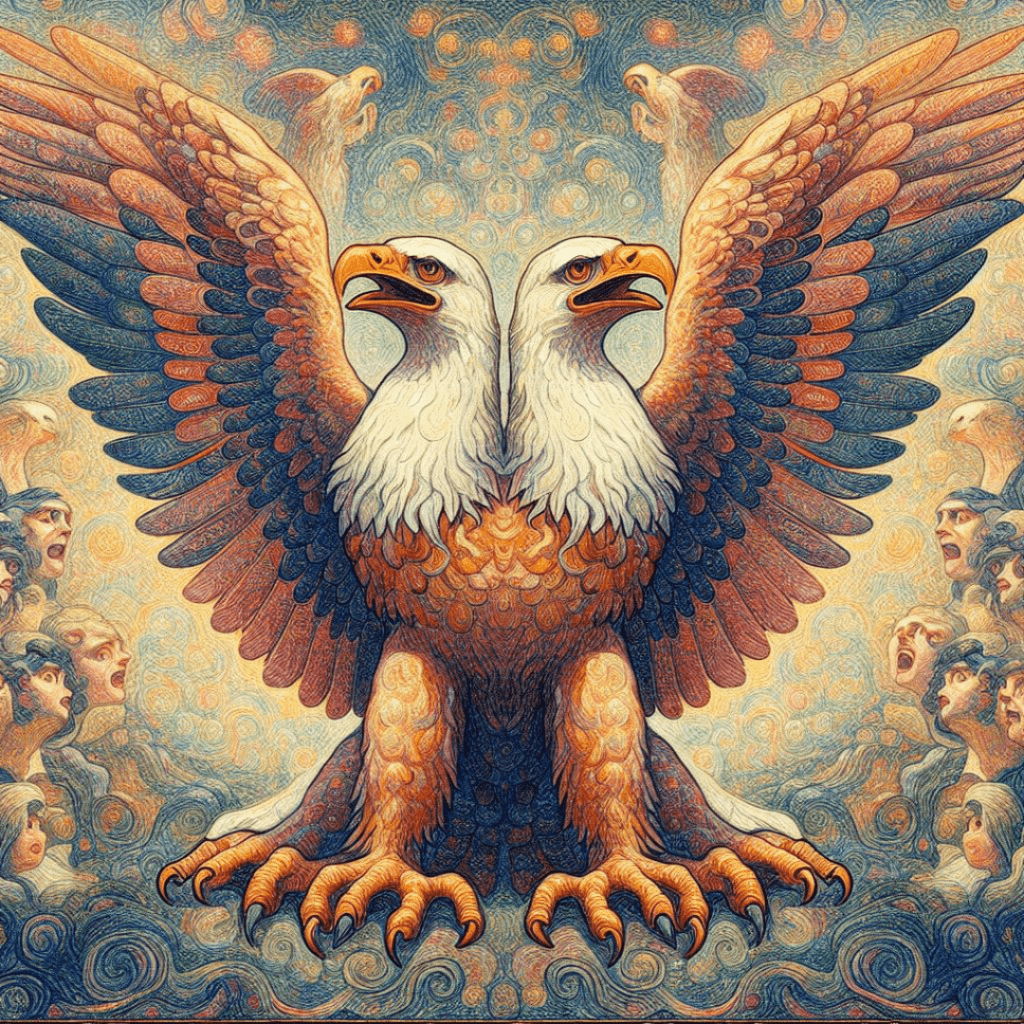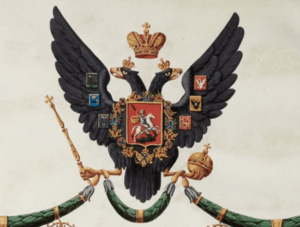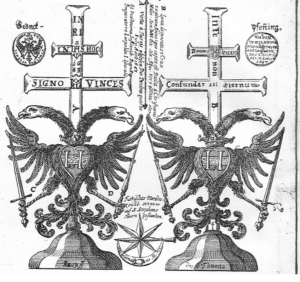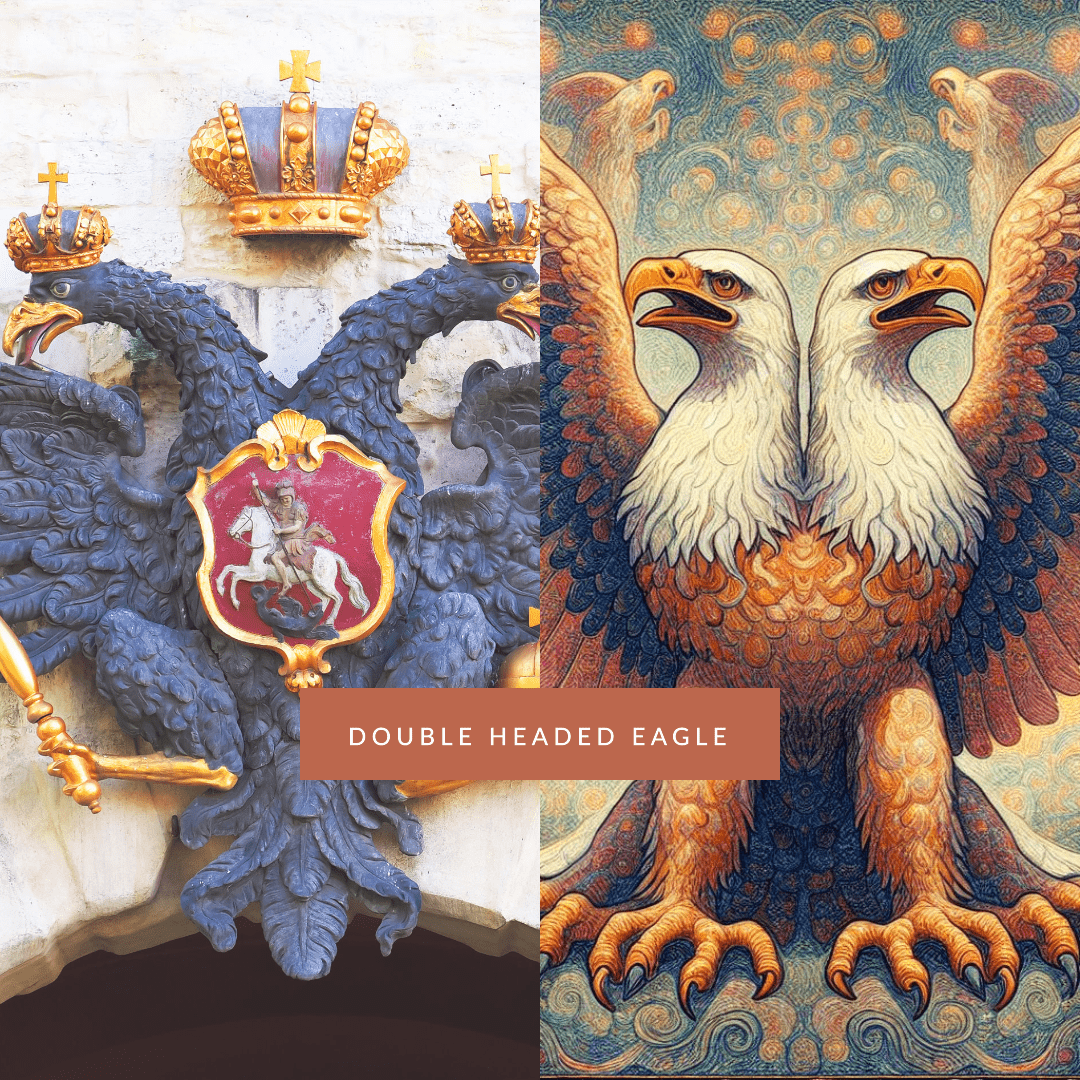
The double headed eagle holds profound symbolism across various cultures and historical contexts and it stands as one of the most pervasive symbols in human history, its image conjuring notions of power, dominion, and the union of opposite, and its Spiritual and Mystical Interpretations go Beyond its political implications, holding profound spiritual significance.
A symbol is something that stands for or suggests something else; it represents something beyond its literal meaning. In literature, a symbol can be a word, object, action, character, or concept that embodies and evokes a range of additional meanings and significance.
For example, consider Robert Frost’s poem “Fire and Ice.” In this poem, fire symbolizes destructive and consuming emotions such as jealousy, desire for power, anger, and impulsivity. Conversely, ice symbolizes destructive and withholding emotions like hate, indifference, loneliness, and isolation. different types of symbols create various effects for readers. They evoke emotions, provide vivid imagery, and allow individual interpretations. Ultimately, symbolism enriches your experience.
The double headed eagle existed long before the birth and masonic orders, and throughout history, it appeared in various contexts. During the Roman and Byzantine Empires, it adorned imperial flags, symbolizing power and

dominion. In medieval Europe, especially in heraldry, it gained prominence. The use of the double headed eagle as a symbol in Russian culture dates back to the 15th century during the reign of Ivan III, the Grand Prince of Moscow. Ivan III sought to consolidate power in Russia and adopted the double-headed eagle as a representation of his authority. This emblem soon became closely associated with the Russian monarchy12. The Romanov dynasty, which began with Mikhail Fedorovich in 1613, continued the tradition. On Mikhail’s seal from 1625, the double-headed eagle featured a third crown. Over time, it became an integral part of the Russian coat of arms during the reign of Tsar Alexei Mikhailovich3. In this context, the double-headed eagle symbolizes dual sovereignty—both secular and religious—of the Tsar, reflecting the unity and power of the Russian state. Its rich history and enduring significance make it a powerful emblem in Russian heraldry and culture. In the 18th century, it became the emblem of the Kadosh Degree in higher degrees in France12.
Let’s explore its meanings in a context of the double headed eagle as used through history:
- Power and Authority: The double-headed eagle has long been associated with power and authority. Its dual heads represent both earthly and heavenly dominion. This duality signifies the balance between material and spiritual realms1.
- Balanced Dualism: The opposing directions in which the heads face symbolize broader perspectives. Contrasting ideas can coexist harmoniously, emphasizing the importance of balance and unity1.
- Unity: Beyond duality, the double-headed eagle points to the need for ultimate unity. Despite differences, there is a shared purpose or higher goal that unites all aspects of existence1.
- Material and Spiritual Power: The double-headed eagle embodies the fusion of material and spiritual power. It suggests that true strength arises from integrating both aspects of life1.
- Expansive Ruling: Historically, this symbol represented rulership over vast territories—East and West. It signified dominion over both secular and religious matters2.
- Ancient Origins: The motif dates back to the Bronze Age, appearing in Hittite art and later in Mycenaean Greece. It resurfaced prominently during the Byzantine Empire and spread across medieval Europe and the Islamic world3.
The Double Headed Eagle and Freemasonry
The double headed eagle holds significant symbolism within aspects of Freemasonry and other orders, particularly in the Scottish Rite and Rose Croix Degrees.

Scottish Rite’s Double Headed Eagle Today is a well-known Scottish Rite symbol, seen on rings, jewelry, clothing, and caps. The basic design shows the eagle’s wings pointed downward, but sometimes they are pointed upward, reflecting a Mason’s status, and embodies multiple layers of meaning:
Nobility and Just Rulership: The eagle symbolizes nobility and just rulership. Its large wings offer protection, while its sharp talons punish evil.
Strength and Courage: The image conveys strength, courage, and foresight.
Eternal Truth: Beyond language and time, it speaks to humanity at an archetypal level. It points to the eternal truth of man’s real nature.
Gateway to Light and Truth: Like the inscription at the temple of Apollo in Delphi—“GNOTHI SEUTON” (Know Thyself)—the double-headed eagle invites self-knowledge and transformation1.
In conclusion, the double headed eagle serves as a multifaceted symbol, its meanings evolving with the cultures that have adopted it. From ancient Hittite carvings to modern heraldry, it remains a powerful emblem of unity, power, and the complex interplay of worldly and spiritual ambitions.
